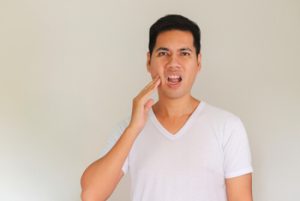So, you’ve just had a tooth pulled, whether it was a wisdom tooth removal or a simple dental procedure, and now you’re wondering, “What should I avoid to heal properly?” Knowing what not to do after a tooth extraction is just as important as following your dentist’s advice on what to do. One wrong move can disrupt the healing process, delay recovery, or even lead to painful conditions like dry sockets.
In this blog, we’ll walk you through the most crucial things to avoid after tooth extraction so you can enjoy a safe and smooth recovery process. Whether you’ve had one tooth extracted or several tooth extractions, these tips apply to everyone.
Why Aftercare Matters So Much
Before diving into the don’ts, it helps to understand why post-extraction care is so important. After your tooth removal, a newly formed blood clot covers the extraction site to protect the wound and begin the healing process. If this clot is dislodged too early, it can expose nerves and bone, leading to a dry socket, a very painful condition that delays healing.
1. Don’t Disturb the Blood Clot
The number one rule after any tooth extraction is to protect the blood clot. This little clot does the heavy lifting during your healing period, so keeping it intact is crucial.
 What to avoid:
What to avoid:
- Sucking through a straw
- Forceful spitting or rinsing
- Smoking or vaping
- Poking the area with your tongue or fingers
These actions can disrupt blood clotting and leave your extraction site vulnerable. For at least the first 48 hours, keep your mouth as calm as possible.
2. Skip Hard, Crunchy, and Chewy Foods
After a tooth has been extracted, your mouth needs time to recover. Chewing tough or solid foods too early can cause irritation or even reopen the wound.
Avoid foods like:
- Nuts
- Chips
- Popcorn
- Toast
- Steak
- Chewy treats like toffees or gummy lollies
Stick to a soft food or soft diet that won’t require much chewing. Mashed potatoes, scrambled eggs, yoghurt, and smoothies are great go-tos.
3. Avoid Hot Drinks and Spicy Foods
Hot beverages like tea, coffee, or soup can interfere with the newly formed blood clot. Similarly, spicy foods can irritate the extraction area and cause discomfort.
Choose:
- Lukewarm water
- Cool or room-temperature herbal teas
- Non-acidic smoothies
Avoiding hot drinks and overly spicy foods for at least a couple of days will help the extraction site settle.
4. Don’t Rinse Too Soon
It might feel natural to want to rinse your mouth after a procedure, especially if you’re tasting blood. But rinsing too early or too vigorously can disturb the blood clot.
What to do instead:
- Avoid rinsing entirely for the first 24 hours
- Once 24 hours have passed, you can gently rinse your mouth with warm salt water.
- Don’t use commercial mouthwash during the early healing stages.
This simple step will help keep the extraction site clean without disrupting healing.
5. Skip Brushing Near the Extraction Site
Yes, good oral health matters, but aggressive brushing or flossing near the extraction area can do more harm than good in the first couple of days.
Be gentle:
- Use a soft-bristled toothbrush
- Clean your teeth gently, avoiding the wound
- Resume normal brushing only after the area is completely healed
If you’re unsure, your dentist will let you know when it’s safe to resume brushing near the area.
6. Avoid Strenuous Activity
Light activity is okay, but anything that raises your heart rate too much could increase bleeding and delay recovery.
Don’t:
- Hit the gym or go for a run
- Lift heavy objects
- Do intense housework
Keep your head elevated when resting, and prioritise rest over fitness for the first 48 hours.
7. Say No to Smoking and Alcohol
Smoking affects blood flow, reduces oxygen to your tissues, and increases the risk of dry sockets. Alcohol, on the other hand, can thin the blood and interact negatively with pain medication.
Try to:
- Avoid smoking for at least 72 hours (preferably longer)
- Say no to alcohol for at least 48 hours
- Ask your dentist for support if quitting feels difficult
Your oral health will benefit tremendously if you use this healing time to take a break from smoking altogether.
8. Stay Away from Acidic Foods
Acidic foods like citrus fruits, vinegar-based dressings, and tomato-based sauces can irritate the extraction site, especially during the early healing phase.
Avoid:
- Oranges
- Pineapple
- Lemon juice
- Spaghetti sauce
Instead, choose healthy foods that are gentle and promote recovery, like soft-cooked vegetables and lean protein options.
9. Don’t Ignore Signs of Trouble
 Mild discomfort, swelling, or oozing is normal, but certain symptoms mean it’s time to call your dentist immediately.
Mild discomfort, swelling, or oozing is normal, but certain symptoms mean it’s time to call your dentist immediately.
Watch for:
- Increasing pain after a few days (could be a dry socket)
- Persistent bleeding beyond 24 hours
- Bad taste or odour from the extraction site
- Fever or chills
These could be signs of infection or complications that need urgent care.
10. Avoid Dairy If You’re Nauseated
Though not a hard rule, dairy products like milk and cheese can sometimes worsen nausea, especially when combined with certain pain medications.
If you’ve had a local anaesthetic and are feeling queasy, try non-dairy soft foods like mashed pumpkin, porridge, or applesauce until the nausea passes.
11. Don’t Skip Meals
It might be tempting to avoid eating altogether, especially if your mouth feels sore. But your body needs energy and nutrients for proper healing.
What to eat:
- Small meals throughout the day
- A balanced, soft food diet with carbs, protein, and healthy fats
- Cold or room-temperature smoothies with added oats or protein powder
Good nutrition will promote healing, reduce fatigue, and help you get back to a healthy smile faster.
12. Never Self-Medicate Without Asking
You might be tempted to take extra painkillers or add herbal remedies, but not all medications are safe post-extraction. Some may affect blood clotting or react negatively with your prescribed medications.
Always:
- Follow your dentist’s instructions carefully
- Ask before taking any over-the-counter products
- Keep your dentist informed of all medications and supplements
A Few Final Tooth Extraction Do’s
 While this blog focuses on what not to do, here are a few quick tooth extraction do’s to balance things out:
While this blog focuses on what not to do, here are a few quick tooth extraction do’s to balance things out:
- Use an ice pack on your cheek during the first 24 hours to reduce swelling
- Drink plenty of water
- Get adequate rest
- Follow all post-care instructions from your dental team
These small actions will go a long way in preventing complications and speeding up the recovery process.
Wrapping Up: Protect Your Smile the Right Way
Having a tooth extracted is never anyone’s idea of fun, but your healing process doesn’t have to be painful or drawn out. By avoiding the common mistakes outlined above and staying committed to post-care instructions, you’ll support your body’s natural ability to heal quickly and comfortably.
Remember, if you’re ever uncertain about your symptoms or how to care for your extraction site, get in touch with Beyond Infinity Dental at (02) 8806 3799 to guide you towards a full recovery and back to a healthy smile.
Note: Any surgical or invasive procedure carries risks. Before proceeding, you should seek a second opinion from an appropriately qualified health practitioner.
References
- Healthline. (n.d.). Tooth extraction: Cost, procedure, risks, and recovery. Healthline. Retrieved from https://www.healthline.com/health/tooth-extraction
- Colgate. (n.d.). How a salt water mouth rinse benefits oral health. Colgate. Retrieved from https://www.colgate.com/en-gb/oral-health/mouth-sores-and-infections/how-a-salt-water-mouth-rinse-benefits-oral-health
- Cleveland Clinic. (n.d.). Dry socket: Symptoms, causes & treatment. Cleveland Clinic. Retrieved from https://my.clevelandclinic.org/health/diseases/17731-dry-socket









